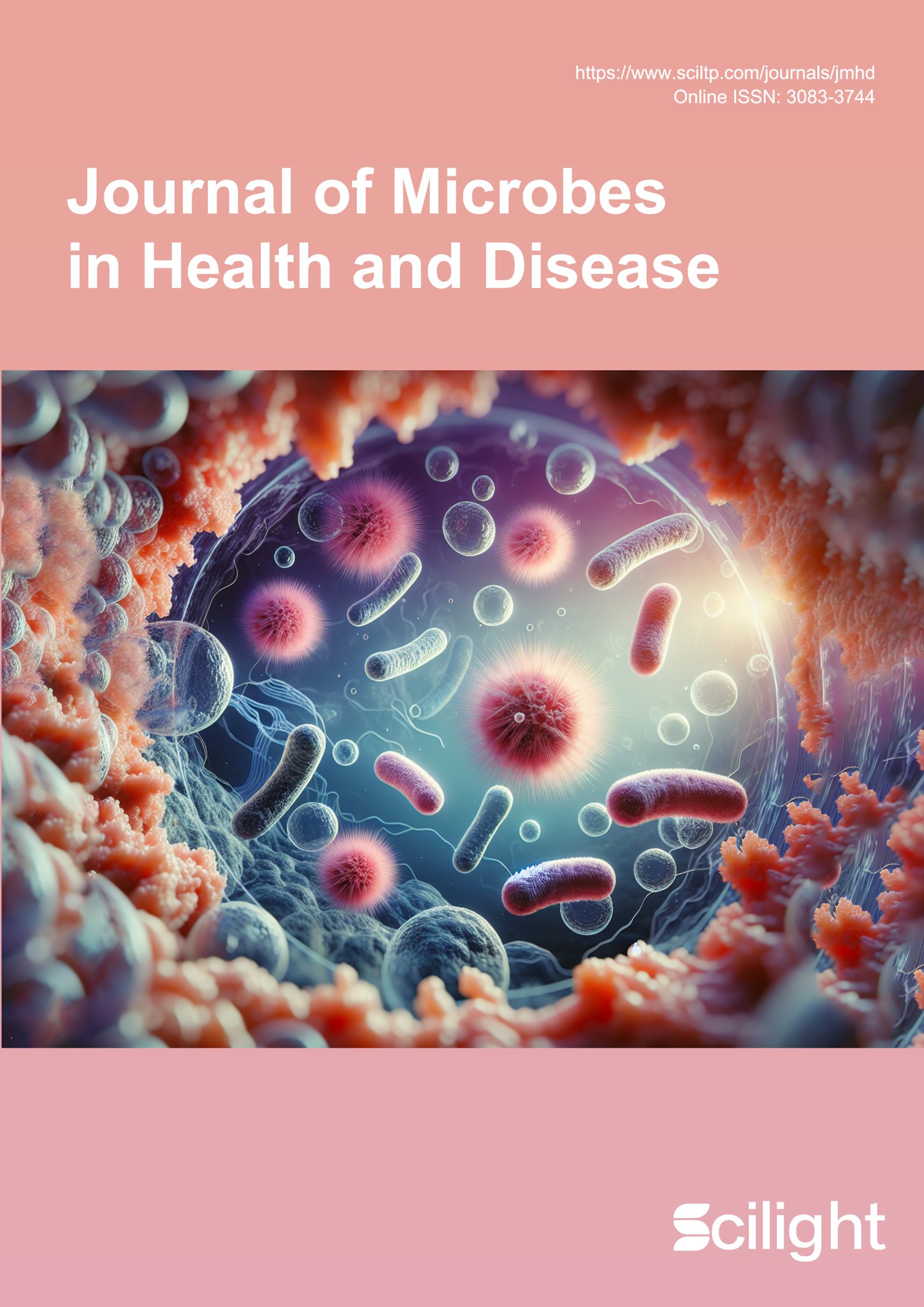Virulent diseases continue to cause millions of global deaths annually, exacerbated by the growing issue of microbial resistance, which casts uncertainty on the future use of antimicrobial drugs. Catharanthus roseus (Periwinkle or Sadabahar), a medicinal plant belonging to the Apocynaceae family, is abundantly found in tropical regions and is rich in phytochemicals. The leaves of C. roseus are commonly used in traditional medicine for the treatment of various critical illnesses. This research aims to explore the phytochemical composition and antimicrobial activity of both aqueous and methanolic extracts of C. roseus leaves. The study evaluated the presence of key phytochemicals such as flavonoids, glycosides, phenols, saponins, tannins, terpenoids, and steroids, alongside testing the antibacterial potential of the extracts. The extracts were tested against four common bacterial strains using the agar well diffusion method, with Ciprofloxacin serving as the standard control. The results revealed that the aqueous extract exhibited the highest antibacterial activity, with a zone of inhibition of 55 ± 0.6 mm against Staphylococcus aureus (S. aureus), followed by 45 ± 0.3 mm against Salmonella enterica. The methanolic extract also showed significant antibacterial activity, with a zone of inhibition of 40 ± 0.2 mm against S. aureus. Conversely, the methanol extract showed the smallest inhibition zones against Bacillus subtilis (24.0 mm) and Escherichia coli (E. coli) (25.0 mm). Phytochemical analysis of methanolic extract revealed the presence of glycosides, flavonoids, phenols, tannins, steroids, saponins, and terpenoids. These findings confirm the promising antimicrobial efficacy of both the methanolic and aqueous extracts of C. roseus, particularly against E. coli, S. aureus, S. enterica, and B. subtilis. The study supports the therapeutic potential of C. roseus as a valuable medicinal resource and eco-friendly alternative for combating microbial infections and producing value-added products, including treatments for complex diseases such as cancer.
- Open Access
- Article
Eco-Friendly Antibacterial Potential of Catharanthus roseus Leaf Extracts: A Green Approach to Natural Drug Discovery
- Vibha Bhardwaj
Author Information
Received: 22 Apr 2025 | Revised: 28 May 2025 | Accepted: 30 May 2025 | Published: 03 Jun 2025
Abstract
Keywords
Catharathus roseus | antibacterial | agar well diffusion assay | methanolic extract | microorganisms | aqueous extract
References
- 1.Parihar, S.; Sharma, D. Navagraha (nine planets) plants: The traditional uses and the therapeutic potential of nine sacred plants of India that symbolises nine planets. IJRAR 2021, 8, 96–108.
- 2.Chaudhary, K.; Parihar, S.; Sharma, D.A. Critical Review on Nanoscience Advancement: In Treatment of Viral Infection. J. Drug Deliv. Ther. 2021, 11, 225–237.
- 3.Prajapati, N.D.; Purohit, S.S.; Sharma, A.K.; et al. A Hand Book of Medicinal Plants, 1st ed.; Agrobios: Mumbai, India, 2003.
- 4.Jamal, Q.M.S.; Ahmad, V. Identification of metabolites from Catharanthus roseus leaves and stem extract, and In vitro and In silico antibacterial activity against food pathogens. Pharmaceuticals 2024, 17, 450. https://doi.org/10.3390/ph17040450.
- 5.Arulvendhan, V.; Saravana, B.P.; Rajaganesh, R. Molecular identification and phytochemical analysis and bioactivity assessment of Catharanthus roseus leaf extract: Exploring antioxidant potential and antimicrobial activities. Appl. Biochem. Biotechnol. 2024, 196, 7614–7641. https://doi.org/10.1007/s12010-024-04902-w.
- 6.Pham, H.N.; Vuong, Q.V.; Bowyer, MC; et al. Phytochemicals derived from Catharanthus roseus and their health benefits. Technologies 2020, 8, 80. https://doi.org/10.3390/technologies8040080.
- 7.Asheesh Kumar, A.K.; Singhal, K.C.; Sharma, R.A.; et al. Analysis of Antioxidant Activity of Catharanthus Roseus L. and it’s Association with Habitat Temperature. Asian J. Exp. Biol. Sci. 2012, 3, 706–713.
- 8.Sain, M.; Sharma, V. Catharanthus roseus—A Review of Potential Therapeutics Properties. Int. J. Pure App. Biosci. 2013, 1, 139–142.
- 9.Kumari, K.; Gupta, S. Phytopotential of Cathanthus Roseus L. (G.) Don. Var. “Rosea” and “Alba” against Various Pathogenic Microbes In vitro. Int. J. Res. Pure Appl. Microbiol. 2013, 3, 77–82.
- 10.Allamsetty, J.; Pedada, S.P.; Pedada, N.; Dhanunjayarao, K. A basic review on Vinca rosea. Int. J. Pharm. Chem. 2020, 1, 31–36
- 11.Bhardwaj, V. Taxus wallichiana Zucc. (Himalayan Yew): A Medicinal Plant Exhibiting Antibacterial Properties. Adv. Microbiol. Infect. Dis. Public Health 2023, 17, 145–153. https://doi.org/10.1007/5584_2023_772.
- 12.Bhardwaj, V. Avicennia Marina: A Novel Convivial Phyto Medicine for Antibiotic Resistant Pathogenic Bacteria. J. Biomed. Stud. 2021, 1, 101.
- 13.Bhardwaj, V. Deodar Cedar (Cedrus Deodara): Efficacy for Potential of Secondary Metabolites and Antibacterial Activity. Biomed. Res. Clin. Rev. 2022, 6, 111. https://doi.org/10.31579/2692-9406/111.
- 14.Sahu, P.; Kumar, M.; Sharma, A.K. In vitro Phytochemical Screening and Antibacterial Potentiality of Catharanthus roseus Leaves Extract Against Some Pathogenic Bacteria. Int. J. Curr. Microbiol. App. Sci. 2024, 13, 272–278. https://doi.org/10.20546/ijcmas.2024.1310.031.
- 15.Patil, P.J.; Ghosh, J.S. Antimicrobial activity of Catharanthus roseus—A detailed study. Br. J. Pharmacol. 2021, 1, 40–44.
- 16.Goyal, P.; Khanna, A.; Chauhan, A.; et al. In vitro evaluation of crude extract of Catharanthus roseus for potential antibacterial activity. IJGP 2008, 2, 176–181. https://doi.org/10.22377/ijgp.v2i3.27.
- 17.Grover, A.; Arya, N.; Neeta, S.S.; et al. Sadabahar (Catharanthus roseus): Utilizing green potential for antimicrobial activity. Int. J. Adv. Biochem. Res. 2024, 8, 537–539. https://doi.org/10.33545/26174693.2024.v8.i1Sh.392.
- 18.Chinnavenkataraman, G.; Srinivasan, R. In vitro antibacterial activity and phytochemical analysis of Catharanthus roseus (Linn.) G. Don. Asian Pac. J. Trop. Biomed. 2012, 2, S155–S158.
How to Cite
Bhardwaj, V. Eco-Friendly Antibacterial Potential of Catharanthus roseus Leaf Extracts: A Green Approach to Natural Drug Discovery. Journal of Microbes in Health and Disease 2025, 1 (1), 100004. https://doi.org/10.53941/jmhd.2025.100004.
RIS
BibTex
Copyright & License

Copyright (c) 2025 by the authors.
This work is licensed under a Creative Commons Attribution 4.0 International License.
Contents
References


